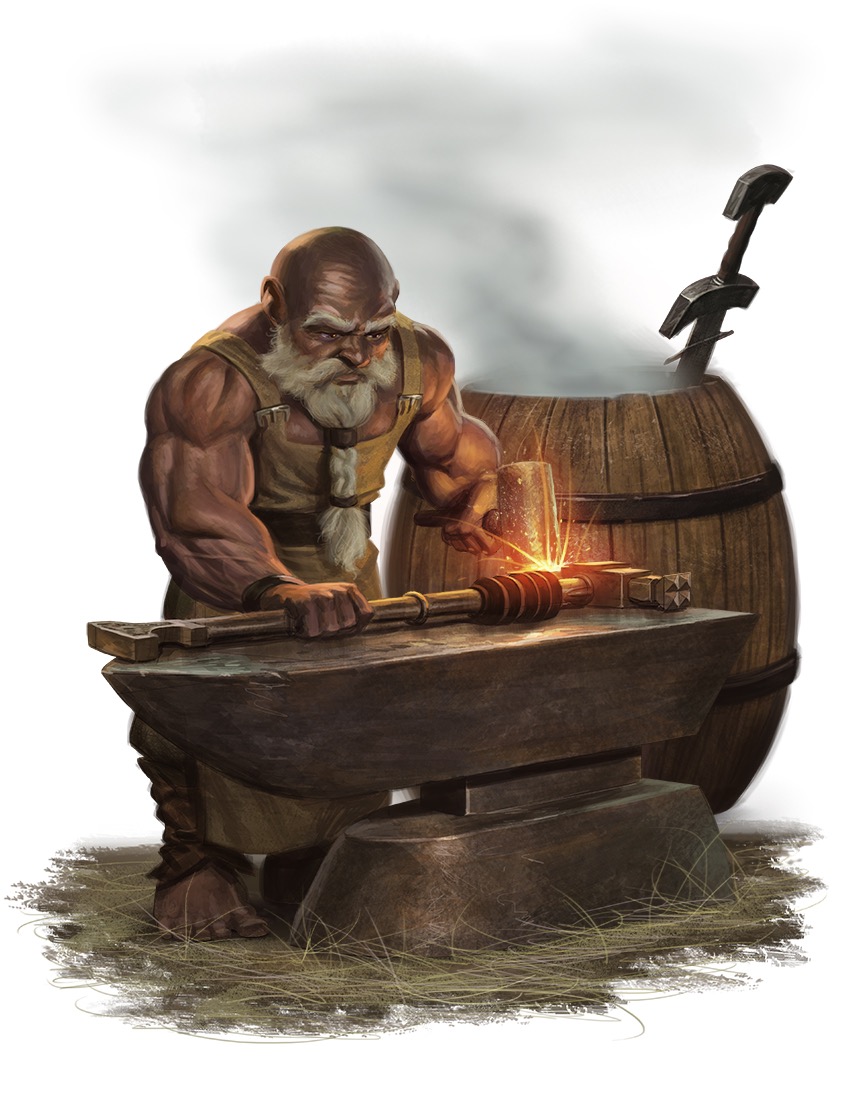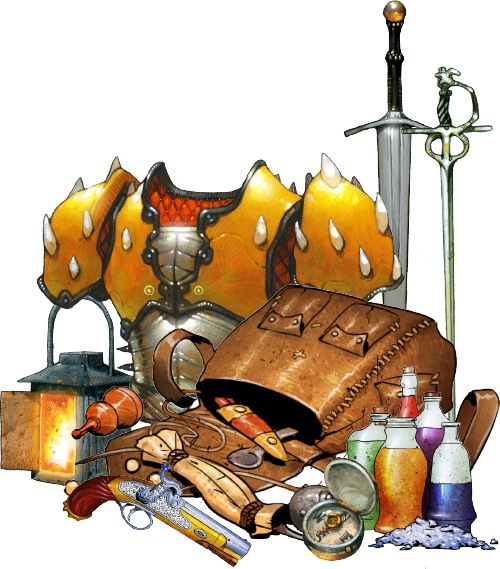Greetings and salutations! I’m back to help you with your conversions from 1st edition Pathfinder to Second edition. Over the past weeks, I’ve helped with conversions of monsters from one edition to the next. This week, I figured we could take a look at another vital part of the game: magic items! Magic items have seemingly become a staple of fantasy roleplaying, so it’s important to be able to keep using your favorite ones with Pathfinder 2E. So, without further ado, let’s dive right into it!
Before I get started, don’t forget to take a look at Paizo’s conversion document. It has some great information on getting a magic item to about the level it should be in 2E. 
Beyond knowing the basic level of the item and an appropriate price for the item, it’s also important to understand how to translate things over to the new 2E action economy. The first thing to determine is how many action using an item, if any, it should take. A good rule of thumb is that anything that originally required a swift action or a move action, should now require one action. Anything that required a standard action, should now require two actions and anything that requires a full-round action can be three actions. In addition, think about what kind of traits these actions should have. For the most part, this is a matter of whether or not the item should trigger reactions when activating, specifically Attacks of Opportunity. The design team did a great job with translating the activation components to make this a simple matter. The Command component replicates command words and does not have the manipulate trait, for example. If something should provoke an Attack of Opportunity, go ahead and give it the Interact component.
In addition to the basic actions, consider whether or not the item should have any other limiting factors on its activation. Many items had limits that only allowed their use once per day or a few times per day. These can be replicated pretty easily with a frequency line. However, a frequency of “three times per day” isn’t really a thing anymore. (Actually, there is an item with a “twice per day” activation, but it’s limited to a 10-minute activation.) What frequency breaks down to is how often a character should be able to use it per combat. If the magic item’s ability is akin to a cantrip or a very low level spell compared to its level, it can probably safely be a “once per round” frequency. This also applies to magic items that should be easy to activate (read: one action items), but shouldn’t be used multiple times in a round. If the item should be used with regular frequency, it can be a “once per minute” item, while something that is close to a focus spell in power should be “once per 10 minutes.” If something should only be used every once in a while, then make it “once per hour,” but recognize that particularly powerful items should totally be “one per day.” It will take a gut check to know what these should be and you may need to tweak these here and there.

Finally, let me cover some general tips. Consider what type of item this should be under the new rules. Magic items come in a great variety from consumables to structures to held items to worn items. Each of these has specifications that make them unique, such as the investment requirements for armor, weapons, and worn items. Make sure to consider whether the item should require investment. Ten invested items can seem like a lot, but those available investments will definitely start wearing thin at higher levels. For the purposes of magical effects, don’t be afraid to make “spells in a can” to replicate the effects of the original magic items. Spells are also a great benchmark for the power of an item. Items shouldn’t invalidate a spellcaster, though, at least not at first. Avoid having an item that can take the place of a spellcaster at the same level as that will probably make the party mage feel kind of cruddy. Rather than having an item that can grant the effects of invisiblity as a 3rd-level item, consider holding off a few levels to allow the resident mage some time to shine with their casting of the spell. Such an item would probably be better as a 5th-level or higher item. Also, try to make the item more interesting if you can. An item can totally grant a simple item bonus to a save, skill, or other check, but the Core Rulebook does a great job of covering most of the basics. Try to include interesting activation abilities or passive abilities to justify the item’s mechanical niche and encourage players to take it.
I think to properly display these tips in action, I should convert an item over for you! The 2E core rules surprisingly don’t have the handy haversack, which is such a classic I had to have it right away. There were a few things that I had to keep in mind here. First, I didn’t want to invalidate the bag of holding. To avoid that, I made sure that the handy haversack couldn’t hold as much as the bag of holding. Second, I wanted to make sure that replicating the drawing of an item didn’t provoke Attacks of Opportunity but was also limited to once per round. Finally, I wanted to make sure the item had an interesting wrinkle to make it more than just a direct port, which is why I added what I call the “item launcher” portion of the item. I hope you like it! Next week, I’ll be covering the conversion of spells. I hope you’ll join me then!
Handy Haversack Item 4
Conjuration Extradimensional Magical Invested Worn
Usage worn; Bulk 1
This well-made backpack appears to be ordinary and has the typical wear and tear for packs of its type. The pack has two side pouches which each appear to hold about a quart of material. However, each pouch functions much like a bag of holding and can hold up to 2 cubic feet in volume in material or 2 bulk. The large central pocket of the pack can contain up to 8 cubic feet of material or 8 bulk. Regardless of how much it holds, the handy haversack only counts as 1 bulk. You can Interact with the handy haversack to put items in or remove them as you would with a mundane backpack.
Activation [one-action] (Envision) Frequency Once per round; Effect You imagine a specific item within the handy haversack and the pack immediately opens, producing the item and allowing you to grab the item as part of the action.
Activation [three-actions] (Command, Interact) Effect You order the handy haversack to produce an item of 1 bulk or less and deliver it to a creature within 30 feet. The handy haversack throws the requested item, allowing the designated creature to catch it with ease. If the designated creature does not have a hand free to catch the item, it lands harmlessly in the creature’s space and can be picked up with an Interact action. You can instead use this ability to fire an appropriate item to attack a nearby creature, such as throwing an alchemist’s fire at a nearby foe. In this case, you make a standard attack roll as if you were making a Strike with the chosen item. The GM can determine if a thrown item is appropriate to attack a creature based on the properties of the thrown item.





